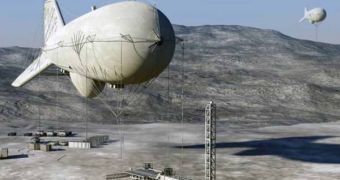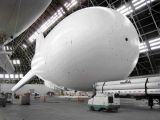Ever since lighter-than-air crafts have been discovered, they have been used for a variety of purposes, ranging from transporting passengers in luxury conditions to bombing enemy targets. Now, thanks to a new US Army project, aerostats could again be employed in combat, but this time as detectors, trackers and destroyers of cruise missiles. Dubbed the Joint Land Attack Cruise Missile Defense Elevated Netted Sensor, the new platform will be able to efficiently destroy cruise missiles, which are known for their ability to change direction and to fly low and slow, Space informs.
Conversely, ballistic missiles can only be set on pre-determined paths, and they can be fairly easily destroyed by existing tactical missile defense systems, such as the Patriot missile batteries, and the Terminal High Altitude Area Defense (THAAD) mobile rocket carriers. But a cruise missile attack would be far more difficult to counter-act, partially because it has to be detected first. This implies the US Air Force (USAF) flying reconnaissance missions, spending valuable resources and manpower to actively search for a threat that may never come.
That's why using flying balloons is much more advantageous. They only require a fraction of the resources regular planes take, and can also offer more results, because they can be placed in stationary positions around objectives, or in certain “hot spots” around the globe. They are extremely proficient in detecting ground-hugging cruise missiles. These rockets travel very low, and literally slip under the radar. The only moment authorities become aware of them is when they see them, or when they strike, so devising protection methods against such weapons is of a paramount importance, the Pentagon believes.
Raytheon Integrated Defense Systems of Tewksbury, Massachusetts, is the main contractor for the $1.4-billion project, and the company has already begun to construct two prototypes. The 242-foot (74-meter) -long, helium-filled aerostats will have the ability to detect incoming cruise missiles of any type as far as 124 miles (200 kilometers) away in every direction, providing a complete, 360-degree cover. Each of them will be equipped with a surveillance radar, a fire control radar, mobile mooring stations and communication packages, and will operate at heights of about two miles (three kilometers), connected to the ground via tethers.

 14 DAY TRIAL //
14 DAY TRIAL // 
